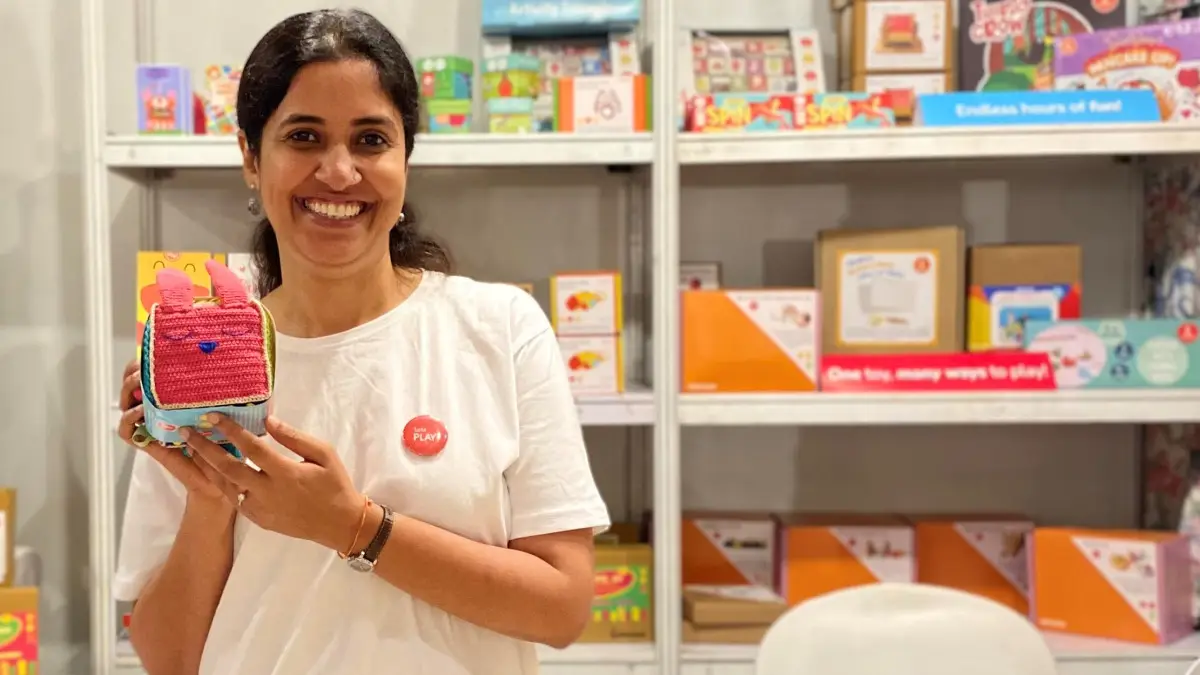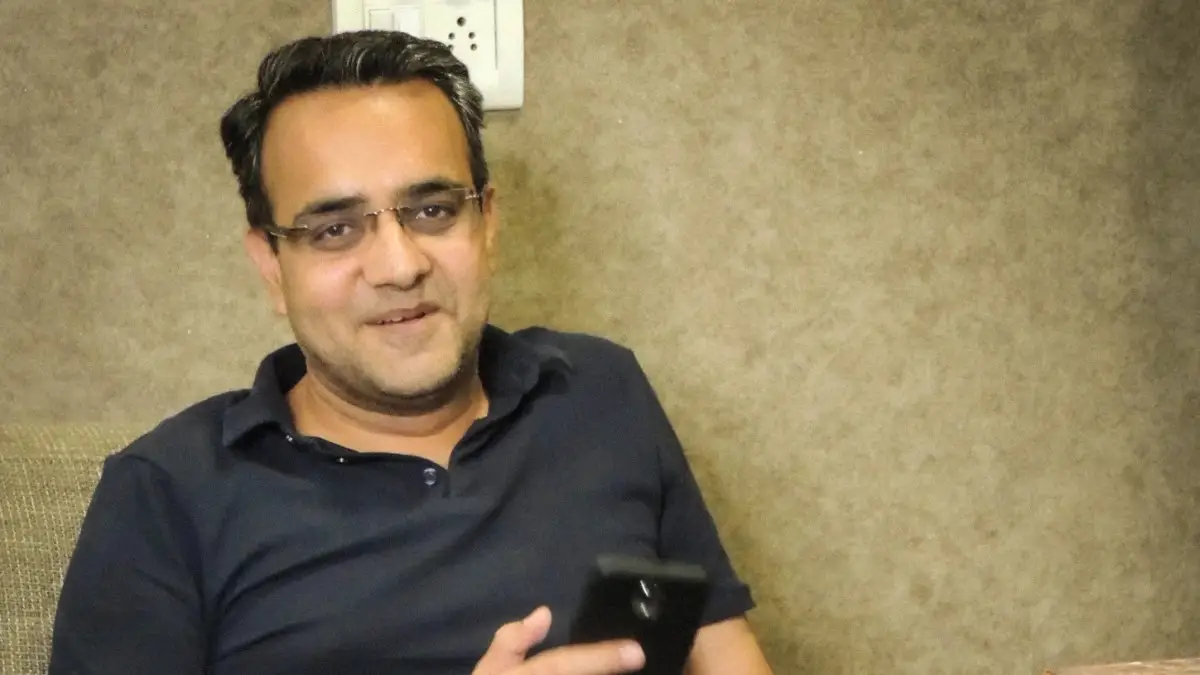[ad_1]
Upon moving back from the US to India, Meeta Sharma could not find toys that her two toddlers could safely and meaningfully play with. Those available were made from plastic and had so many bells and whistles that they were more distracting than engaging.
Exasperated, the Harvard-educated engineer set about designing toys and along the way, Shumee Toys was born in 2014. There were roadblocks galore. Finding suitable suppliers was challenging since she wanted to use non-toxic materials and ensure the products adhered to the Bureau of Indian Standards (BIS) guidelines. Moreover, creating a brand in a fragmented and unorganised market was an uphill task. Sharma’s perseverance, however, was validated when prime minister Narendra Modi praised the Bengaluru-based start-up for making eco-friendly toys during his latest ‘Mann Ki Baat’ radio address.
In the same address, PM Modi also lauded Pune-based Funvention Learning for increasing children’s interest in science, technology, engineering, the arts and math (STEAM) through toys and activity puzzles. Milind Vadnere, co-founder and CEO of Funvention Learning was thrilled with this mention. “The early years of a child’s life are crucial for brain development, and if we replace a kid’s screen time with hands-on STEAM learning activities, it will help them develop essential skill sets to sustain themselves in a competitive world,” he says.
Being involved in science, arts and technology do-it-yourself activities while growing up helped him and his brother explore various streams apart from the regular school curriculum and choose their respective careers. “We founded our start-up with a vision to engage kids with fun and invention-based learning activities,” says Vadnere.
According to a report by FICCI and KPMG, the Indian toy market was estimated to be around $1 billion in 2019-20 and is expected to double to $2 billion by 2024-25. This growth, fuelled by several Indian start-ups, just like the ones run by Sharma and Vadnere, has been a long time coming for a country with a rich toy-making history—right from the Harappan civilisation era.

Toying With Made In India
While delivering his Independence Day speech on Monday, PM Modi mentioned that he wanted to salute little children aged between 5 and 7 years, adding that he had heard from countless families how the kids tell their parents that they do not want to play with foreign toys. “The nation’s consciousness has been awakened…When a 5-year-old child makes such a resolution, it reflects the spirit of self-reliant India in him and ‘Aatmanirbhar Bharat’ runs through his veins,” he said.
To push that Aatmanirbhar Bharat sentiment, the government, in February 2020, had hiked the customs duty on toys from 20 per cent to 60 per cent. Consequently, imports fell sharply from $304 million in 2018-19 to $36 million in 2021-22, as per the Ministry of Commerce and Industry. This move also gave local players a shot in the arm.
The government mandated that domestic manufacturers have BIS certification for import. This ensured that they invested in processes and equipment to improve their product quality as they scouted global markets as part of their expansion plans. The BIS implementation has almost decimated cheap Chinese imports which accounted for nearly 85 per cent of the pre-2020 market.
Vipul Gupta, co-founder of goDiscover, states, “Cheap goods dumped in Indian markets are nowhere to be seen now. Toy stores are more interested in doing quality business than quantity, favouring our products because they fall in a higher ticket size. Rather than import duties, BIS on toys has been more beneficial for us because duties can be evaded by under-invoicing.”
For indigenous toy companies, while things are rosier today than they were a few years ago , they still encounter several problems. Topmost is the perception that locally manufactured toys are inferior to imported ones.

When Manish Govil’s father founded Frank Education Aids in 1989, he found that the technology to manufacture paper and cardboard-based jigsaw and educational puzzles was not readily available in India. Moreover, it was more financially viable to manually manage processes like pasting and boxing than investing in expensive equipment. Over the years, Govil imported machines to increase production capacity and improve quality. This also ensured that the company’s products are well accepted in international markets, though they remain a niche in India.
This is partly because buying good-quality toys is an afterthought for most Indian households. Therefore, companies depend on offline stores to provide a physical demonstration and convince consumers about their product quality or the premium pricing. For instance, GoDiscover customises content for Indian consumers and is fussy about its materials and the fabricators it works with. This inadvertently increases the cost of the end product.
There is also a constant battle for retail space and smaller companies often get edged out by popular ones. “Initially, we faced a lot of competition from bigger brands in terms of getting shelf space at any toy store because we had a limited number of stock keeping units and the concept was unknown,” Gupta recalls.
In the pre-pandemic years, domestic toy makers had it tough with a major challenge being raising capital from financial institutions. Vibhor Monga took small loans from friends and family and dipped into his savings to start Toy Junction in Varanasi. “Moreover, sourcing raw materials is difficult and expensive in Tier-III cities. We rely on metros like Delhi or Mumbai for everything—from good quality polythene for packaging, shrink films, gun tags to barcodes,” he recalls.
Getting BIS-certified products is not easy or economically feasible for small manufacturers, he says, wishing that the process was simpler and cheaper. Nonetheless, Monga is grateful for the step by the government since it is more viable for companies like his to manufacture locally than import from China.

Covid-19 To The Rescue
Finding activities that match a child’s intellectual level while weaning them away from the digital screen’s allure is easier said than done. Most children are not fascinated by traditional games and contemporary toys do not hold their interest for long since they do not add any value to their knowledge. Moreover, they crave something novel instead of repeating the same activities daily.
To make matters worse, Covid forced parents to seek learning-based toys to keep their children engaged during the lockdown. The pandemic, however, came as a lifesaver for India’s indigenous toy industry.
According to Gupta, while the demand for education-based products did exist before 2020, the pandemic amplified parents’ keenness to invest in meaningful products that give their young ones a stimulating experience while having fun and learning.
Monga says that while people seek newer products now, board games had become extremely popular in 2020. He also pegged the Indian toy market’s current year-on-year growth rate to be 30 per cent with some categories seeing higher traction. Sharma’s Shumee saw its growth rate double in the last couple of years as well.
Govil, founder of Noida-based Frank Educational Aids, says, “Before Covid-19, our year-on-year growth was around 5 to 10 per cent, which has increased to 25 to 30 per cent in the past couple of years.”
Exploring Export
Following a fillip in their business, courtesy of the pandemic, export is the next frontier for most local brands. According to the Ministry of Commerce & Industry, toy exports increased from $109 million in 2018-19 to $177 million in 2021-22.
While Funvention Learning’s Rs 2 crore turnover in 2021-22 came entirely from its domestic business, it is now discussing with multiple export facilities ways to tap the overseas market. Eighty-five per cent of Shumee’s Rs 9 crore turnover in 2021-22 came from domestic sales and Sharma hopes to increase the global contribution to its revenue mix.
Given its Indianised content, GoDiscover’s Rs 6 crore revenue in the last fiscal came from the local market. It is now creating international products for exports. Interestingly, 20 per cent of Frank Educational Aids’ Rs 14 crore turnover last fiscal was already from the global market and Govil hopes to push it up further.
The toy business is no child’s play. According to Sharma, the landscape is dotted with start-ups seeking support to boost their presence and scale their business. “Getting support and visibility points from the government will help. It would help if the government can facilitate export tie-ups,” she opines.
Govil agrees. He says that further incentives for the export business and reduction of GST on toys would go a long way in boosting the sector. The GST burden increases the cost for manufacturers who sell products at higher maximum retail price, thus reducing the customer’s interest in this segment. Vadnere echoes Govil’s views and points out that do-it-yourself toy manufacturing costs are already high as compared to those of the ready-to-play toys.
The government has taken steps to give India’s toy story a new lease of life. Now, the onus is on the brands to make a play for taking the country’s indigenous creations global.
[ad_2]
Source link








